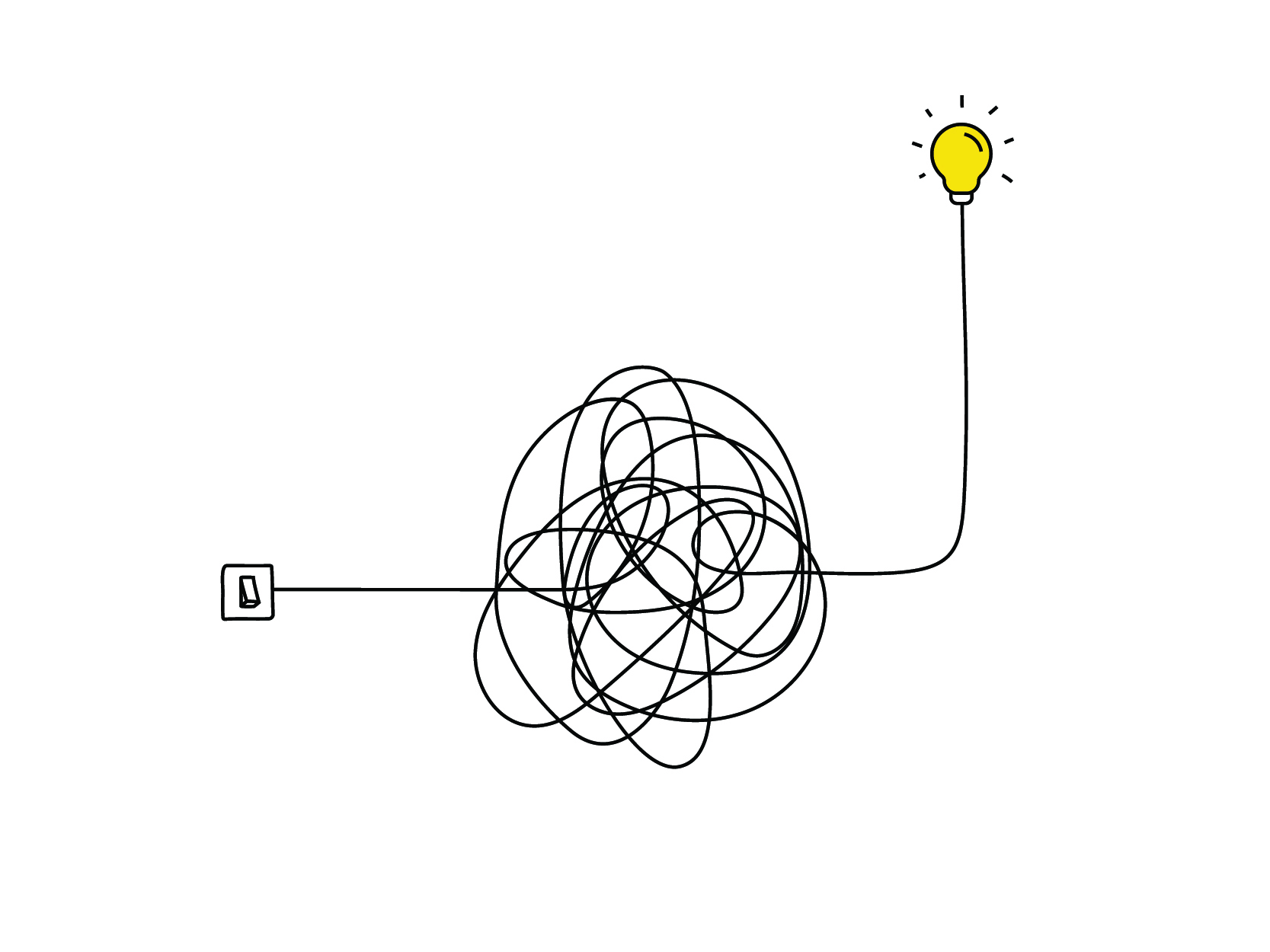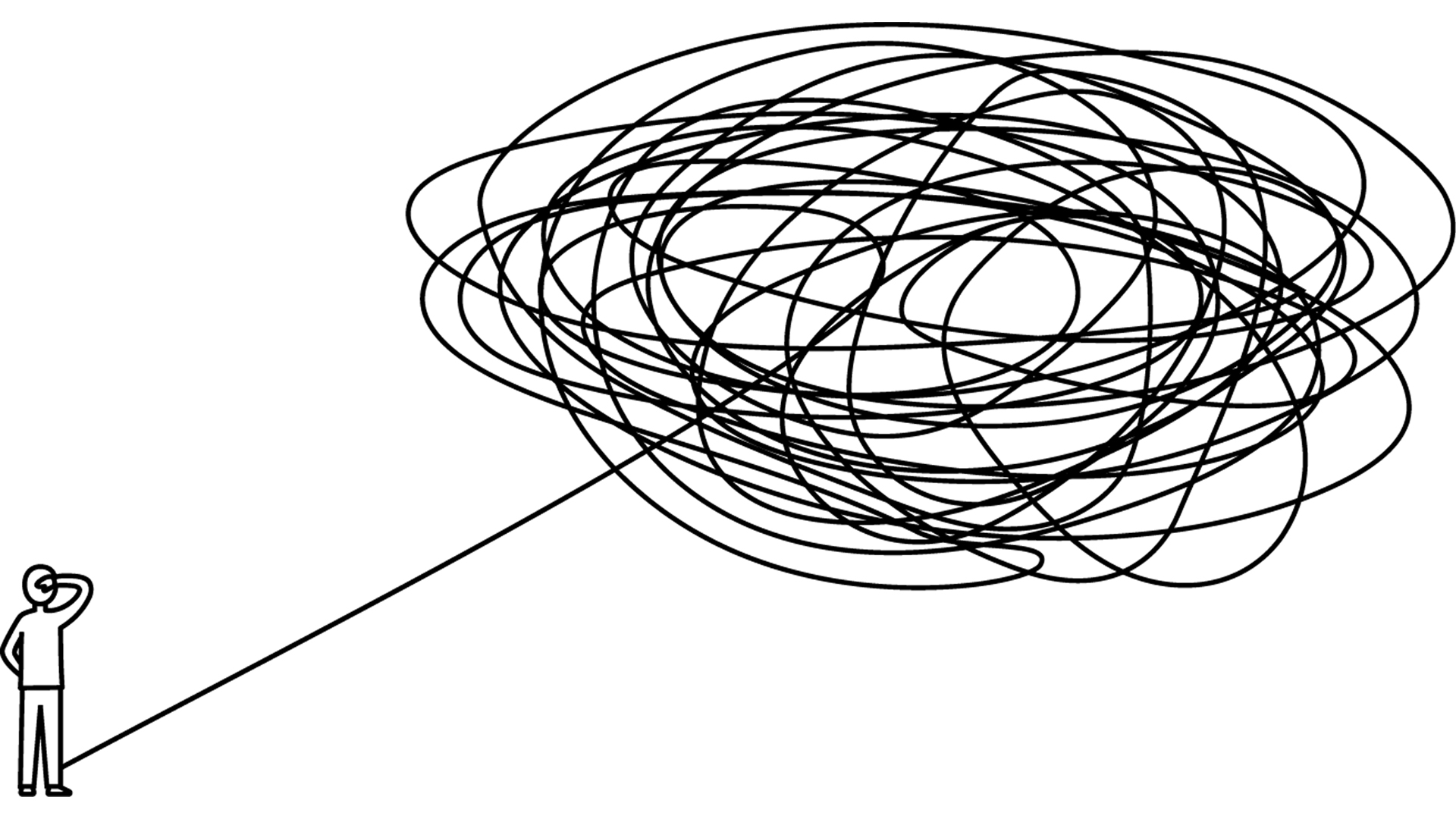
A comment from a student during a recent conversation stopped me in my tracks. “The longer we spend in graduate school, the more depressed we get,” they said. In this student’s immediate cohort, it’s a commonly held view about the world that awaits them as they begin their careers in public policy.
Having done my share of doomscrolling myself, I was nonetheless distressed that this is what we are communicating to the next generation of leaders. But the message is consistent with a strong, arguably dominant strain in policy discourse: that things are bad and worsening beyond control.
Summing up today’s problem environment in an instantly viral and memorable concept, the British economic historian and commentator Adam Tooze picked up a concept from the 1970s to describe a current “polycrisis”: a confluence of climate change, energy transition, war, pandemic, technological disruption, economic instability, geopolitical shifts and loss of faith in the capacity and representativeness of democratic institutions.
Such an outlook can be paralyzing for policymakers trained to define problems analytically. There is not a “single logic” to a polycrisis that lends itself to policy analysis. Rather, it is a narrative describing a gathering concatenation of furies that threatens to overwhelm all sectors of society.
How can we keep our bearings and approach such a tangle of large problems without succumbing to despair and fatalistic inaction? Two inter-related orientations can help.
First, we need a counter-narrative: a story of rising and strengthening capability, to respond to the polycrisis story of decline and helplessness. To tell that story we need a plot with an historical arc that reaches back beyond the past few decades and forward past the next.
Second, to situate the problems of the present within that arc we need a perspective that inverts the way we define those problems.
Why is this change of perspective important? I’m reminded of an apocryphal parable. We each have two wolves fighting within us, it goes: the wolf of despair and anger, and the wolf of hope and grace. Which one wins? The one we feed.
The challenge for the optimist
The American economist Robert Shiller says optimistic and pessimistic narratives shape economic choices, an argument reinforced by both theoretical and empirical demonstrations from others who have shown that optimistic or pessimistic assumptions influence economic and other life choices.
In the world of public policy, an optimistic narrative might open us up to policy choices that a pessimist might ignore. Of course, the reverse is also true. But given the current prevalence of pessimism, an optimistic narrative is a necessary antidote and spur.
Let us therefore consider how history can tell a story of rising. There is a grand epic to be told across a sweep of history in which wars and pandemics have come and gone, industries and entire civilizations have waxed and waned, technological development has both disrupted and benefited social life, yet the overall trajectory has been toward greater prosperity, greater length and quality of human life, much reduced immiseration on both national and global scales, and the rise and spread of liberal democracy.
The best-known empirical illustration of this story plot has been provided by Steven Pinker through his book of 75 impressive if sometimes controversial charts; the most evocative phrasing of its moral is Martin Luther King Jr.’s indelible epigram: “The arc of the moral universe is long, but it bends toward justice.” In the shorter term, the United Nations Human Development Index, combining measures of per-capita income, education, and longevity steadily rose on average from 1990 to 2019 across nations and in more than three-quarters of individual nations, declining only during the two years of the COVID-19 pandemic that followed.
Is there a “grand narrative” of inequality in rich countries?
Why we should resist assumptions about the job market and inequality
Within this epic arc there are nonetheless subplots that are less salutary. Nations and regions have faced their own polycrises of varying scale and duration. Enslavement and colonization created chronic polycrises that simultaneously assaulted the cultural, social and economic underpinnings of Indigenous ways of life around the globe – a legacy that continues and a pattern that is replicated in contemporary cases such as the Uyghurs in China and the Rohingya in Myanmar.
In Europe, the mid-19th-century was a period of simultaneous crises symbolized by the well-chronicled Revolutionary Spring of 1848 that had in common the sense that governments had failed even if there was no consensus on what governments should do or what form they should take. More recently, the Asian financial crisis of 1997-98, resulting from a clash of logics of regionalism and globalization and between Western liberal and Asian value systems, prefigured the economic and social upheaval triggered by the global financial crisis of 2008.
Yet in each case there is a story of resilience and resourcefulness to be told. The inspiring resilience of Indigenous Peoples has become a central theme of reconciliation efforts across nations. Out of the “chaotic potential of an interconnected world” of 19thcentury Europe emerged the nation states that would, through yet more crises of convulsive wars, ultimately provide the platform for contemporary European democracies and the European Union.
The Asian financial crisis helped to precipitate an overdue and ongoing recasting of the postwar international economic order, not only to take account of changing geopolitics but also to consider how global forces play out within the zone of domestic political interests and institutions in different nations.
But these long historical arcs offer cold comfort to those who must confront the challenges of the short term. And even in the long term there are subplots in which King’s moral arc is harder if not impossible to discern.
The gains of progress have not been equally distributed, and they have come with costs. Global income inequality rose steadily over the course of the 19th century and has persisted throughout the 20th century, even as the floor of human subsistence was raised with the dramatic reduction of extreme poverty across the globe. In the natural world, human activity has been devastating to many non-human species and ecosystems.
Global warming has followed a relentless upward trend since the late 19th century, and the rate of increase has accelerated since 1981: the surface temperature in 2022 was 0.86 degrees C warmer than the 20th century average and 1.06 degrees C warmer than the pre-industrial period prior to the 19th century. The Zoological Society of London monitors about 5,200 species of vertebrates (a fraction of the estimated 62,000 vertebrate species in existence) and estimates an average 69-per-cent decrease in 32,000 populations of those monitored species between 1970 and 2018, raising alarm about the loss of biodiversity.

Another story view
These trends call for action and cannot be ignored. Yet in determining the course of action we also need to look at them another way. Instead of a story that each of these problems is getting worse, what if the story is that they have stopped getting worse. While this is not as optimistic a story as one in which things are improving, it at least directs our attention to factors that have bent the curve.
Take income inequality: the persistence of global income inequality over the course of the 20th century can be seen as a plateau. (Global income inequality declined from 2000 to 2020, but 20 years is too short to draw conclusions.) Looking at estimates of income inequality between countries versus income inequality within countries, researchers have found that these two trends have often moved in opposite directions. That is, as the world has become more equal, individual countries on average have become less equal, and vice versa – an effect that might be expected from the globalization of trade.
A somewhat analogous pattern can be seen with global warming, although in this case the plateau effect relates to future projections. Until 2022, the Intergovernmental Panel on Climate Change (IPCC) projected that global warming would continue beyond 2030 based on national trajectories of carbon emissions. In 2022, for the first time, the IPCC estimated that emissions would decline by 2030 and not increase beyond that, though the trend would be insufficient to reach a stabilization target of a 1.5-degree C increase in global surface temperatures.
As for biodiversity, we need to consider not only endangerment and extinction but also “speciation:” the rise of new species, which has always been part of evolution. Taking into account both extinction and speciation presents a much more complex picture than simple “up or down” arithmetic would suggest. How do these losses and gains affect the complex ecosystems in which these species interact, and what does that mean for factors such as air quality, climate and freshwater supply that are essential to the quality of life on this planet?
In all of these cases, global averages tell us only part of the story. We need also to look at how the story changes in different national and natural contexts. Within-country income inequality varies markedly among nations, as do commitments to carbon emission reductions. Speciation rates and biodiversity also vary greatly across environments. There is much to be learned by exploring these differences.
Examine the successes
This brings us to a different approach to policy problems. Instead of asking why the level of [insert policy problem here: income inequality, carbon emissions, biodiversity loss, and on and on] is so high, what happens if we ask why it is not higher? Why did each of these phenomena not continue on their seemingly inexorable rates of increase? What are the factors that caused them to plateau or countervailed them, and how can we strengthen those factors? And what if instead of asking where these problems are worst, we look to places where they have been mitigated? What can we learn from success stories?
Take global income inequality as an example. If the flattening of the curve results from the dynamic interaction of global and domestic forces at different times, what leverage can we exert on these forces to bend the curve further and downward? Domestic taxes and transfers reduce the level of within-country inequality, but they appear to have little effect on the shape of the trend overall.
We need a mix of instruments that not only buffers against global shifts but that also builds the resourcefulness of individuals, households and communities in adapting to those shifts – what some have called a mix of redistribution and “predistribution.” Nations that have followed such strategies provide a population of success stories for exploring these effects. Analogous approaches can be taken to problems of global warming and biodiversity loss, pointing to the success of both public and private investments in renewable energy sources, and conservation programs, especially in biodiversity-rich areas. As proponents of a “supply-side agenda” have advocated we need to invest, as societies and polities, in what we want more of.
A focus on the downside might ultimately lead to some of the same conclusions. But if we want to attract the talent and fire the enthusiasm of the next generation of policymakers who will wrestle with these issues, we should surely offer more than the challenge of making a hopeless future more tolerable. The optimistic wolf needs sustenance.









